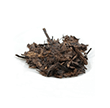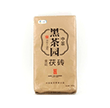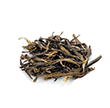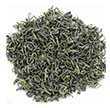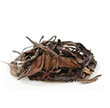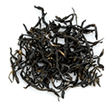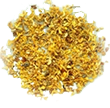How Chinese Tea Is Made

Withering
Picked leaves are spread out (inside and/or outside in the sun) to soften the cell walls of the leaves. This softens the leaves by drawing the moisture to the surface for evaporation, begins natural enzymatic oxidization and sets up the next stage of processing. This also reduces the grassy taste of tea leaves.
Tossing/Bruising (Turning Over)
Known as "Shaking" in Chinese, because in the old days, the leaves were simply shaken in a wicker basket. Today, this step is done with the aid of machines to further break down the leaves by mechanical means (as opposed to chemical means as in "Withering"). This improves oxidation and mixes chemical elements from the stems with the leaves, removing bitterness and balancing the flavour of the tea.
Oxidization (Partial and Full)
This step used in Oolongs and Black Teas continues the natural process of fermentation by allowing the leaves to rest after the Withering or Tossing/Bruising (Turning Over) steps. The time allowed determines the amount of fermentation for the tea being made. At this point, the leaves turn to a darker green or even a red colour, due to the breaking down of the cell structure of the leaves. It is at this stage where the tea begins to develop its grassy, flowery or fruity taste characteristics.
“Kill-Green” (also known as Fixing”)
Stops the natural fermentation and growing processes within the leaves without damaging them. Steaming the leaves, hand pressing in a hot pan and baking techniques are used. This also sets up the next step for Rolling/Forming the leaves.
Rolling/Forming
Leaves are passed through hot and/or cold rollers to slightly break down the leaves, which intensifies the tea flavour and establishes the shape of the leaves.
Drying
Establishes the final moisture content of the leaves, stops fermentation, prevents mold growth, removes any remaining grassy leaf taste and develops the tea's aroma. Sun drying, pan heating and hot air methods are used.
Firing
(Oolongs) Various methods of roasting in a pan or a basket with charcoal or electric heat are used to give a smoky flavour or a fruity characteristic.
Piling/Heaping
(Black Pu-Erh Tea) Leaves are heaped into a pile, moistened, covered and allowed to rest in a warm environment which speeds the natural fermentation process. The heat caused by fermentation “cooks” the leaves, giving this tea its unique mellow taste and distinct dark colour.
Steaming/Shaping
(Pu-Erh Tea) Leaves are steamed and made into their final shapes before packaging . This includes bricks (Juan Cha), cakes (Beeng Cha), bell shapes (Toa Cha) and mushroom shape (Moa Gu Taow).
 Top of Page
Top of Page

Ask The Tea Wizard
Don't know which tea is right for you? Answer a few questions and the Online Wizard will show you all the Chinese teas that suit your taste.


